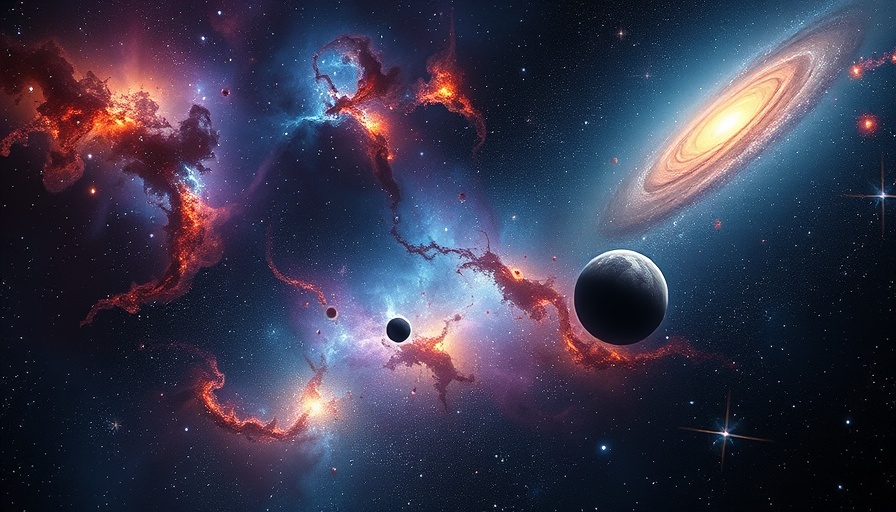
Webb Telescope Unveils Mysteries of the Early Universe
In a groundbreaking discovery, astronomers using the James Webb Space Telescope (JWST) have observed a remarkable emission of hydrogen light from a galaxy existing merely 330 million years after the Big Bang. This finding not only challenges existing theories concerning the universe's initial conditions but also suggests potential gaps in our understanding of cosmic evolution during the age of reionization.
What Makes This Discovery So Significant?
The galaxy, designated JADES-GS-z13-1, has unveiled a surprisingly vibrant Lyman-α emission—a specific bright wavelength of light that indicates intense hydrogen activity. Researchers expected little to no light from galaxies at such an early stage due to the dense fog of neutral hydrogen that shrouded the early universe. As Dr. Joris Witstok and his team confirmed, this unexpected brightness hints at the possibility of star formation occurring under vastly different conditions than previously thought.
Understanding Cosmic Dawn and Reionization
The period of cosmic dawn is a crucial chapter in astronomical research, defining the era when the universe’s first galaxies emerged. It was previously believed that this epoch was dominated by an opaque hydrogen fog that absorbed most light. This fog started to clear during a process known as reionization, which typically concluded around one billion years post-Big Bang. The light from JADES-GS-z13-1 suggesting otherwise could mean that reionization was partial or even started earlier than hypothesized.
Potential Implications for Future Research
This discovery raises crucial questions about how galaxies transitioned from being obscured to observable entities. If JADES-GS-z13-1 is capable of emitting such strong light amidst a thick hydrogen fog, it may indicate that other previously dimmed galaxies could potentially be discovered with future JWST observations. Understanding this could fundamentally alter our comprehension of the early universe and how galaxies formed and evolved.
Current Events and Their Relevance
This breakthrough aligns with ongoing efforts to grasp our universe's formative years. The JWST aims to explore previously uncharted territories in the cosmos, and the new evidence from JADES-GS-z13-1 illustrates the potential of this monumental telescope. As evidence mounts, we may find ourselves redefining cosmic history with each subsequent observation.
Your Takeaway
Understanding how light from galaxies pierced the fog of the early universe opens previously locked doors to scientific inquiry. This finding is not just about a distant galaxy; it serves as a reminder of the uncharted territories we have yet to explore in our universe. With ongoing advancements in technology, who knows what other mysteries await us?
 Add Row
Add Row  Add
Add 




Write A Comment